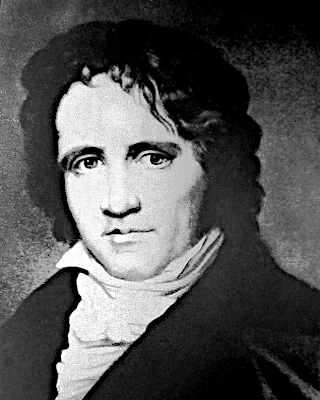
Friedrich Wilhelm Bessel was born on July 22, 1784 in Minden, Westphalia, into a modest family. His father, a civil servant, could not afford a university education for him. At age 14, he became an apprentice in a commercial enterprise in Bremen. However, his mathematical talent was quickly recognized.
In 1804, he independently calculated the orbit of Halley's comet using observations from 1607. This work impressed astronomer Heinrich Wilhelm Olbers (1758-1840), who encouraged him to pursue a scientific career. Bessel then studied astronomy and mathematics as a self-taught scholar before being appointed director of the Königsberg Observatory in 1810, at just 26 years old.
Bessel's greatest achievement was the first successful measurement of a star's parallax. In 1838, after years of meticulous observations, he determined the parallax of the star 61 Cygni to be 0.314 arcseconds, corresponding to a distance of 10.4 light-years (modern value: 11.4 light-years).
This measurement definitively proved that stars are distant suns and not luminous points on a celestial sphere, as Aristotelian philosophy had believed. Bessel used a Fraunhofer heliometer, which he perfected to achieve unprecedented precision.
Bessel made fundamental contributions to several fields of astronomy:
| Field | Contribution | Year | Impact |
|---|---|---|---|
| Astrometry | First measurement of stellar parallax (61 Cygni) | 1838 | Foundation of modern astrometry and proof of stellar distances |
| Celestial Mechanics | Precise calculation of comet orbits | 1804-1810 | Improvement of comet trajectory prediction methods |
| Geodesy | Precise measurement of Earth's curvature in Prussia | 1830s | Major contribution to modern cartography |
| Statistics | Development of the least squares method | 1810s | Revolutionary application in astronomy to reduce observation errors |
| Binary Stars | Discovery of proper motion of Sirius and Procyon | 1844 | Prediction of invisible companions (white dwarfs) |
In mathematics, Bessel studied the solutions to the differential equation that now bears his name:
\( x^2 \frac{d^2y}{dx^2} + x \frac{dy}{dx} + (x^2 - n^2)y = 0 \)
The Bessel functions, denoted \( J_n(x) \), appear in many physical problems involving cylindrical symmetries, such as:
At Königsberg, Bessel transformed a small observatory into a leading research center. His innovations included:
He trained several generations of astronomers, including Friedrich Wilhelm Argelander (1799-1875), who would become a pioneer in stellar astronomy.
In 1844, Bessel noticed that the stars Sirius and Procyon exhibited irregular proper motion. He deduced the existence of invisible companions, which would only be observed after his death (Sirius B in 1862 and Procyon B in 1896). These companions turned out to be white dwarfs, a type of star unknown at the time.
This discovery foreshadowed the study of binary systems and opened the way to modern stellar astrophysics.
Bessel's contributions were recognized during his lifetime and after his death:
| Year | Event | Context |
|---|---|---|
| 1784 | Born in Minden, Westphalia | Modest family, father was a civil servant |
| 1799 | Begins commercial apprenticeship in Bremen | Discovery of his mathematical talent |
| 1804 | Calculates Halley's comet orbit | First work noticed by Heinrich Olbers |
| 1810 | Appointed director of Königsberg Observatory | At only 26 years old, without university degree |
| 1838 | Measures parallax of 61 Cygni | First precise determination of a star's distance |
| 1844 | Discovers invisible companions of Sirius and Procyon | Prediction of white dwarfs before their observation |
| 1846 | Dies in Königsberg | From cancer |
Bessel's work profoundly impacted several fields:
| Field | Contribution | Current Legacy |
|---|---|---|
| Astrometry | Precise measurements of stellar parallaxes | Basis for space missions like Gaia (ESA) |
| Mathematics | Bessel functions | Used in quantum physics, electromagnetism, acoustics |
| Astrophysics | Prediction of white dwarfs | Understanding of stellar evolution |
| Geodesy | Precise measurements of the Earth | Foundation of modern geodesy |
Several scientists paid tribute to Bessel after his death: